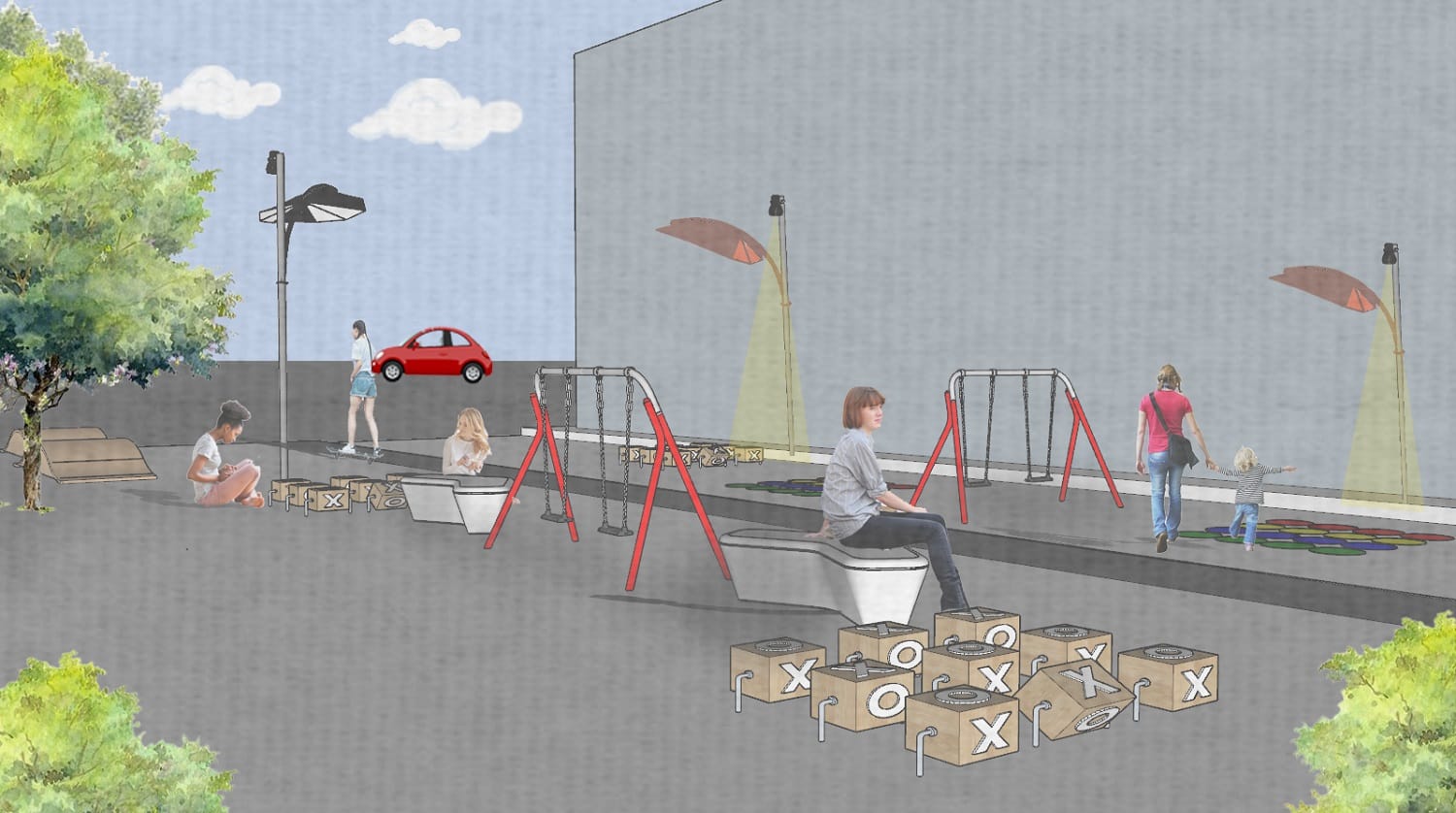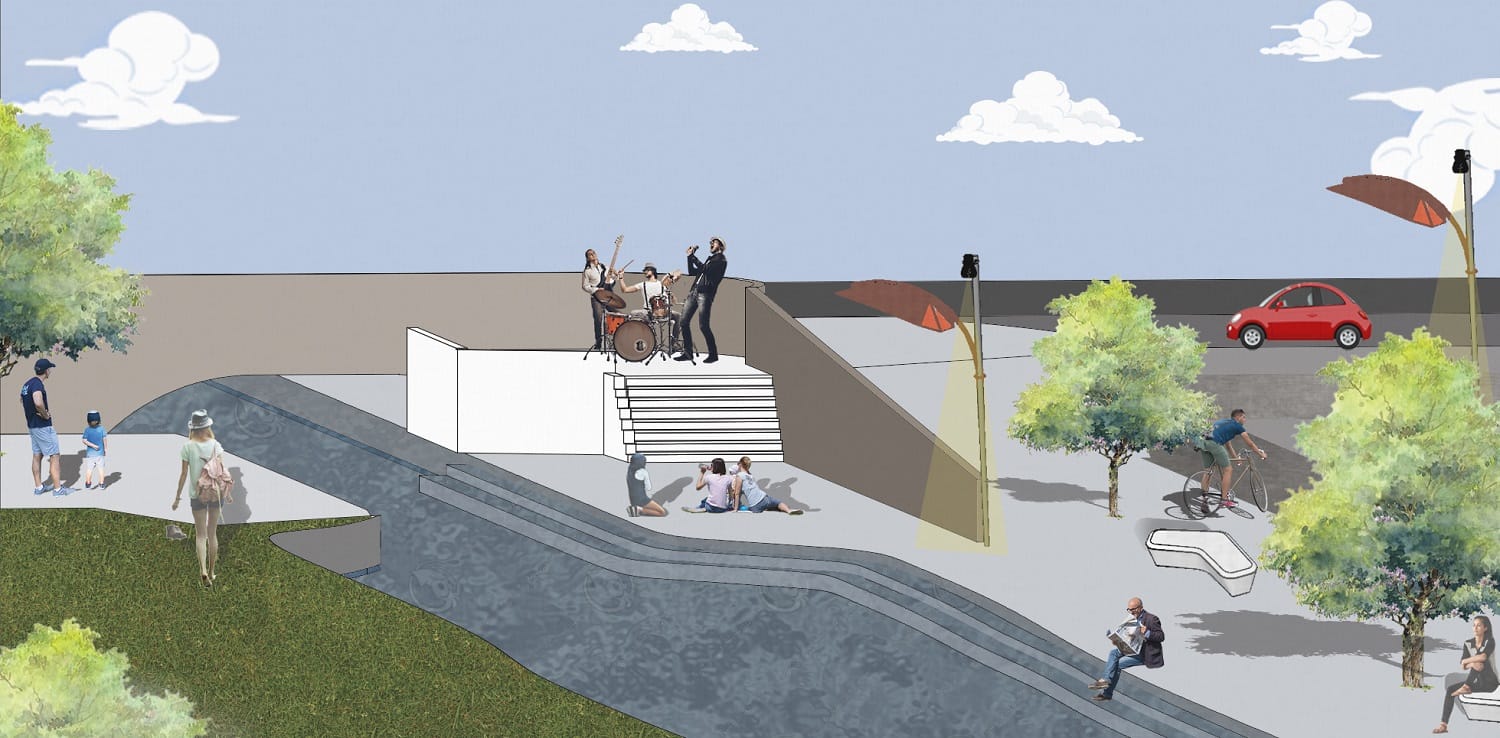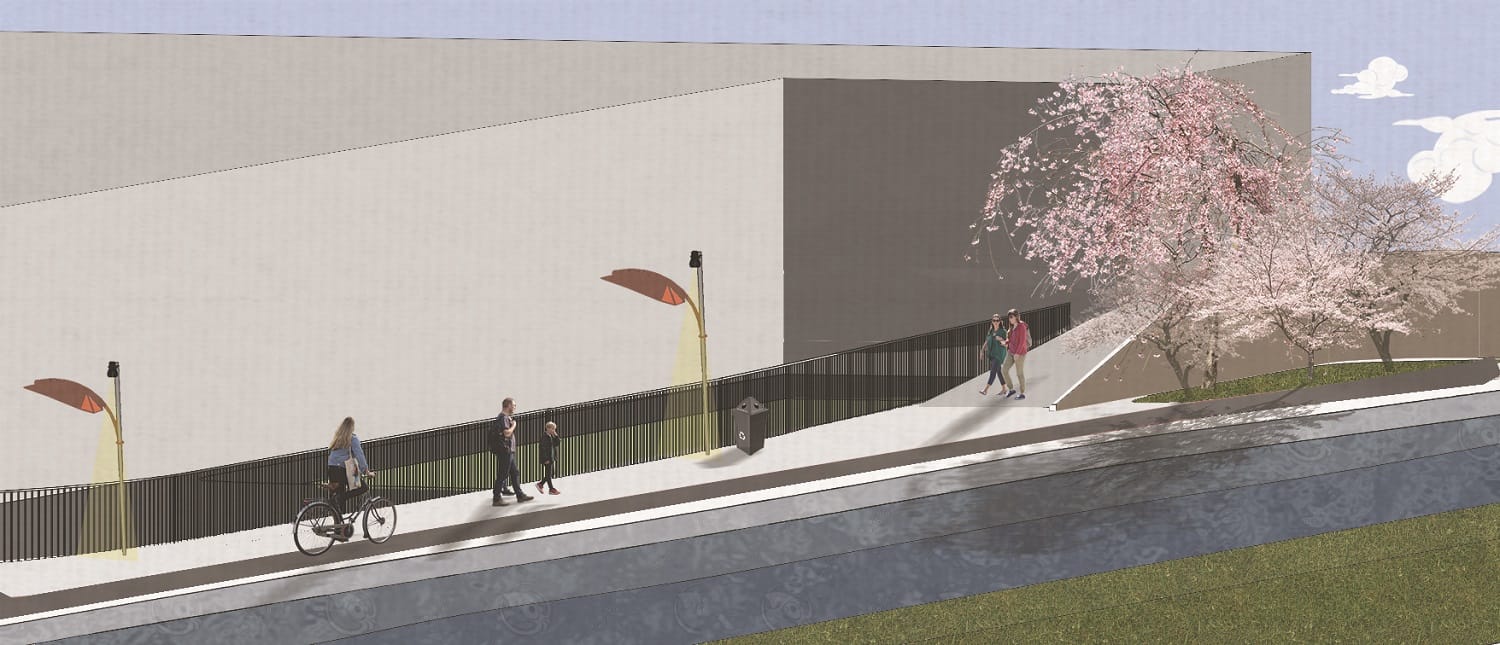What’s the best way to tell area residents about plans for a new asylum shelter nearby?
The government should tell communities directly about plans for new asylum shelters, some activists and politicians say.
“We’d like to do it ourselves, instead of someone else planning it for us,” says Tori Awotunde.

On a recent Wednesday evening, Tori Awotunde and Madison Maloney were colouring in at a table at the end of the main hall of the Swan Youth Centre on Dunne Street.
The pair often drop in to the centre for activities like music and sports.
“Baking every Friday,” says Madison. “We made brownie cups with ice cream. Turned out great.”
Behind them, street youth workers in blue jackets traipse in the front door. A girl and a youth worker bounce and kick a football into one of the hall’s goalposts.
“It’s just fun,” says Tori, as she scribbles with a green colouring pencil. “You get to get out of the house.”
“It’s nice because you get to see your friends as well,” says Olivia Rodrigo as she arrives, folding her arms on the table and smiling at Tori.
But many of the girls– even though some of them live a short distance away – don’t walk to their activities in Swan Youth Centre, but get dropped off.
They don’t feel safe in the streets around it, says Sarah Flynn, founder of A Level Playing Field, a not-for-profit supporting teen girls to design public spaces to meet their needs. “The solutions have to be much more nuanced, and one size doesn’t really fit all.”
In March, Flynn held workshops at the Swan Youth Centre for six girls to discuss ideas for how to make the area around them safer – and the public spaces less boring – with the hope that the council might start to listen to them.
Flynn flips around her laptop to show the girls a digitally rendered drawing of what, based on their ideas, Dunne Street outside could look like.
It is a far cry from Dunne Street today.
“Dull and boring,” says Madison, of the current street.
“Just like nothing to do. No colour or anything,” says Tori.
In the imagined Dunne Street, people are out and about – walking around, sitting, looking in a large mirror, jumping on trampolines.
Flynn clicks through to other images. A band plays along the canal. People line for a food truck, and girls sit on swings, sketch on a blackboard, or roll on skateboards.
Seeing the designs is exciting, says Tori. “If it does actually look like that, that’d be better, to like walk to Swan.”
There would be lots to do while waiting for the centre to open, she says. “We could just jump on trampolines. Or maybe like, do some fun stuff while we wait.” Plus, she says, “it could stop the cars going in.”
In the designs, small covers pop out from the walls as rain shelters, says Tori. “Just like, the weather two seconds ago was very bad. And especially if you’re waiting for someone as well, just stand under there.”

A food truck means the area would be popular, says Tori. “So it feels like it’s more safer to walk.”
“I think everybody knows that we don’t see a lot of girls going like, walking around. It’s just like boys,” says Olivia.
Places like the one they designed might not attract boys, she says. “More like a girl vibe?”
Boys feel more comfortable walking around the streets, says Tori.
In one workshop, the group did a walking trip around the area for inspiration.
They noticed how boring it is, says Tori. “There’s so many dog poos everywhere. That boring grass space needs trees. The lights, because it’s very dark. The floor looks very messy.”
The group had walked along the Royal Canal, perpendicular to Dunne Street, in between Newcomen Bridge and Summerhill Parade.
Flynn brings up the designs that her colleague made, and asks the girls what new things they notice.
“The lights. The trees. And the bin. The bike path,” says Tori.
The cherry blossom is a statement tree, says Flynn, and there are lights under the bridge overpass.
The group had mentioned barriers in the way of the water that mean they can’t feel connected to it, she says. Their new designs show steps down to the water to sit on.
Madison has a fear of water, she says. “So I don’t want to fall into the water. I can’t swim either.”
But the steps are better, she says. “Even if you do fall in, you can just climb back up the steps.”
Toilets are needed, too, says Olivia, and a place to get drinking water. “Because in Portugal we have a lot of that, but here, I never saw one in all my life.”
During workshops, the group had said corners were scary, says Flynn.
She points to the image on her laptop, which shows a tall mirror lining the wall of the Swan Youth Centre, at the canal entrance to Dunne Street. On the wall opposite, is a smaller mirror.
“You’ll be able to see a reflection, see if someone’s coming,” says Flynn, pointing at the image on her laptop.
There’s also sensor lights above the mirrors to see into the mirror, she says. “So if there’s someone there, that you’ll know.”
The girls are pleased to see the mirrors. “It’s good for pictures!” says Olivia happily.
But the bigger idea behind the mirrors is to make people feel safer if they happen to be walking alone, says Olivia. “Most people feel insecure when they’re walking alone home.”
Tori says she doesn’t always feel scared on the streets, it depends on who is hanging around. “It like, depends. If you’re with someone it’s more comfortable.”
Everybody feels a bit like that when it’s dark, says Olivia. “Or even in the day. Things can happen at any time of day.”


Discussions at the workshops went in-depth and were sometimes dark, says Flynn afterwards, walking with her bike in tow along the North Circular Road.
The girls had direct experience of harassment, she says. “Things like being followed and just kind of strange things that make them feel uncomfortable.”
They had talked about how they had changed their behaviour, restricted their movements to avoid it, especially after dark, she says, and after hearing stories of gender-based violence in the media, like the murder of Aisling Murphy on 12 January.
“The canal is one spot that they would definitely never go on their own,” she says.
Flynn says she just picked the canal to redraw as it was near to the Swan Youth Centre, but is happy she did as there are clearly issues with it.
“It’s very complex, the safety issue,” she says, but there was obvious repetition for infrastructure that the girls desired to make them feel safer.
Better lighting, safer corners, and more people around, she says. “Some girls do feel safe in some public spaces, but there’s some that don’t feel safe anywhere. It’s just like an obvious lack of places to go.”
Fairview Park, further up North Strand Road from the Swan Youth Centre, is a favourite place for both Tori and Olivia. It’s lively, they say.
But there are signals that spaces aren’t meant for them.
The swing seats in the playground were made smaller at some point so now the girls don’t fit, says Tori. But “swings are very fun, they’re like timeless, you know what I mean? I feel like anyone would go on a swing.”
Madison says it is annoying to feel unwelcome when a little kid approaches with their parents.
“And you’re just like, ‘Aw, I have to get up now because like the kid has to go on it,’” she says, resting her head on her hand.
Says Olivia: “Sometimes I feel parents judging. But it’s like, where will I go now?”
Their mock-ups for near the canal have sets of swings near the canal, a large tic-tac-toe board, seats, and a food truck to bring people together.
Even teen spaces don’t always work for girls, says Flynn, after the workshop. Like the two teenspaces in Collinstown Park and Tandy’s Park in South Dublin.
Previously, Independent Councillor Peter Kavanagh says they tried to gender-proof the teenspaces in South Dublin, and ensure no one felt left out. “It’s well-lit with multiple access points, and it’s somewhere that’s quite safe in the evenings.”
But Flynn says the teenspaces have outdoor gyms and astroturf pitches, and are too geared towards the interests of teen boys.
In the workshops, the girls listed the things they love doing, she says.
“They want to go rollerblading, they want to sit on big swings, but like swings for chatting,” she says. “Simple things like rolling up and down on the grass, listening to music, drawing, trampolines. More informal play.”
Space for teenagers is important as their presence is often seen as nuisance, she says. “They feel a bit excluded.”
But groups of boys can dominate public play spaces, she says, so one solution is to separate it up and make room for lots of different groups.
“You need to have a smaller astroturf, and then have space to chat or have swings, next to it,” she says.
It would work for all genders, she says. “Because some boys don’t like soccer either.”
Girls like sports, says Flynn, “It would be ridiculous to say they don’t.” But studies show more girls drop out of team sports in their teens.
Tori says it sucks that teenage girls might not have been considered when streets and public spaces were designed.
But after all the work they did, she says she hopes that some changes might be made. “At least some tiny changes at least, and like, more places get nicer. Great to have the swings.”
Flynn says one of her goals for the workshops is to pitch to Dublin City Council to include more teenage girls like them in public consultations.
Says Olivia: “We don’t have opportunity for somebody to listen to us all the time. So it would be nice. Like I don’t think kids can change a lot.”
It would be nice to be asked, says Tori. “We’d like to do it ourselves, instead of someone else planning it for us.”
“Like it’d be different if a man planned to change the area,” she says, “instead of like us, you know what I mean?”
Get our latest headlines in one of them, and recommendations for things to do in Dublin in the other.